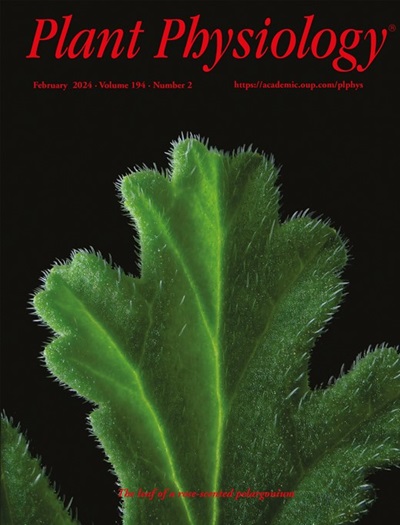甘蓝型油菜种子基因表达格局揭示了亚基因组在空间和时间上的偏倚
IF 6.5
1区 生物学
Q1 PLANT SCIENCES
引用次数: 0
摘要
甘蓝型油菜;AnAnCnCn)包含来自其祖先B. rapa (An)和B. oleracea (Cn)的完整二倍体基因组。尽管对甘蓝型油菜种子基因表达图谱的了解越来越多,但对种子生命周期中支持特定细胞和组织发育的亚基因组偏倚知之甚少。在这里,我们展示了油菜种子的大规模转录组图谱,包括母体种皮和子代胚胎和胚乳亚区。我们报道了在整个发育过程中广泛的,全球的Cn亚基因组偏差,并使用同源基因对来描述亚基因组偏差在亚区域之间的差异。我们发现亚基因组偏差在早期发育期间最为突出,并且母体亚区经历了更多的不对称转录物积累,有利于Cn亚基因组。特别是,合点极出乎意料的不同转录组谱表明了合点内独特的发育过程。此外,我们报告了种子储存的基因组成了成熟种子转录组的很大一部分,特别是在胚胎中,并且以前记录的在种子发育中起重要作用的基因对表现出低转录偏倚。这项工作代表了种子生物学中多倍体转录组学的重要合成,并提供了油菜基因在空间和时间上的表达景观的全面概述。本文章由计算机程序翻译,如有差异,请以英文原文为准。
Gene expression landscape of the Brassica napus seed reveals subgenome bias in both space and time
Brassica napus (canola; AnAnCnCn) contains both complete diploid genomes from its progenitors B. rapa (An) and B. oleracea (Cn). Despite growing knowledge of the gene expression landscape of the B. napus seed, little is known about subgenome bias underpinning the development of specific cells and tissues across the seed lifecycle. Here, we present a large-scale transcriptome atlas of the B. napus seed, including both the maternal seed coat and filial embryo and endosperm subregions. We report on extensive, global Cn subgenome bias throughout development and use homoeologous gene pairs to describe how subgenomic bias differs across subregions. We find that subgenome bias is most prominent during early development and that the maternal subregions experience far more asymmetric transcript accumulation in favour of the Cn subgenome. In particular, the unexpectedly distinct transcriptome profile of the chalazal pole indicates the unique developmental processes involved within the chalaza. Further, we report that genes integral to seed storage comprise a large portion of the transcriptome of mature seeds, especially within the embryo, and that gene pairs previously documented to be instrumental in seed development exhibit low transcriptional bias. This work represents an important synthesis of polyploid transcriptomics in seed biology and provides a comprehensive overview of the B. napus gene expression landscape in both space and time.
求助全文
通过发布文献求助,成功后即可免费获取论文全文。
去求助
来源期刊

Plant Physiology
生物-植物科学
CiteScore
12.20
自引率
5.40%
发文量
535
审稿时长
2.3 months
期刊介绍:
Plant Physiology® is a distinguished and highly respected journal with a rich history dating back to its establishment in 1926. It stands as a leading international publication in the field of plant biology, covering a comprehensive range of topics from the molecular and structural aspects of plant life to systems biology and ecophysiology. Recognized as the most highly cited journal in plant sciences, Plant Physiology® is a testament to its commitment to excellence and the dissemination of groundbreaking research.
As the official publication of the American Society of Plant Biologists, Plant Physiology® upholds rigorous peer-review standards, ensuring that the scientific community receives the highest quality research. The journal releases 12 issues annually, providing a steady stream of new findings and insights to its readership.
 求助内容:
求助内容: 应助结果提醒方式:
应助结果提醒方式:


